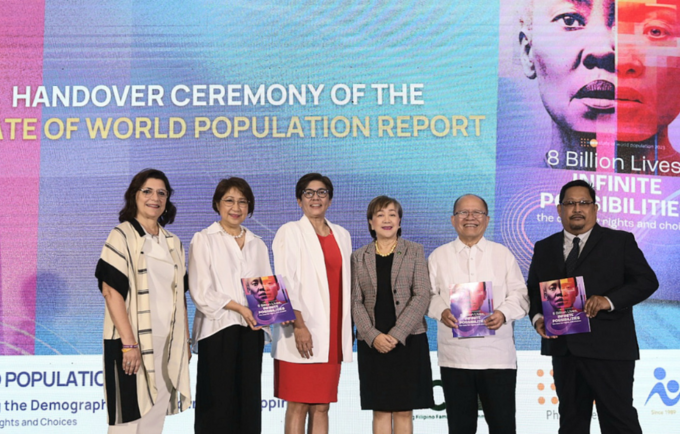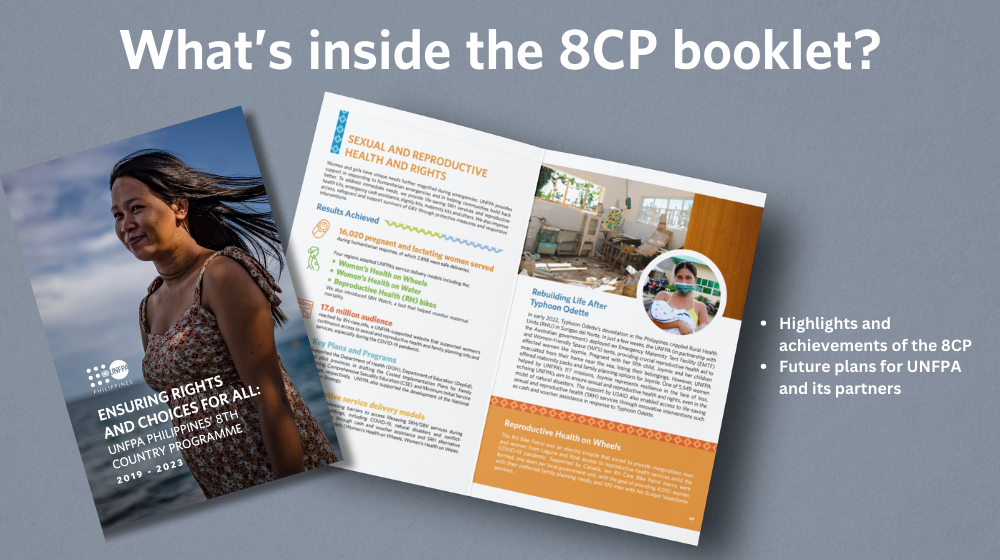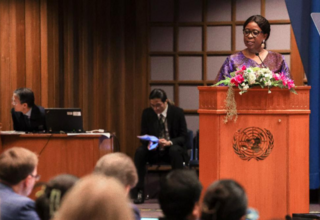In celebration of World Population Day, the Commission on Population and Development (CPD), the United Nations Population Fund (UNFPA) and the Philippine Legislators' Committee on Population and Development (PLCPD) called for the advancement of gender equality and the attainment of the demographic dividend through investing in people and opportunities.
“Currently, the Philippines is at a unique crossroads with its changing demographics. As the country is undergoing a demographic transition, the country will need to work towards demographic resilience: the quality or state of being able to adapt and thrive amid demographic changes,” said UNFPA Philippines Country Representative Dr. Leila Saiji Joudane.
Demographic dividend refers to economic growth resulting from changes in a population’s structure and characteristics. Currently, the declining fertility rate of the Philippines will result in a window of opportunity where the country has a productive population that is larger than its dependent population. The demographic dividend however is not automatic. The country will have to make the right investments and policy decisions in order for it to reap its benefits, by investing in people throughout their life course.
“The demographic dividend can be a powerful force. In order to reap its benefits, we need to ensure the rights of people — especially those most left behind — and provide access to quality education, healthcare, and employment opportunities. We need to also address gender inequality and other injustices that limit people from reaching their full potential,” Joudane said.
The 2022 National Demographic and Health Survey reports that the total fertility rate for 15 to 49 year-old women has declined from 2.7 children in 2017 to 1.9 children in 2022, which is now below the replacement level of 2.1. It is important to note the regional disparities in fertility rate across the country. In Manila, the total fertility rate is 1.2 while BARMM’s total fertility rate is at 3.1.
“Downward trends in fertility rates can be viewed as either an opportunity for a country's development or a cause of concern. But as stated in the State of the World Population (SWP) Report 2023, we should be asking the right questions. It’s not whether the fertility rate is too high or too low or if there are too many or too few people. What is important is that all individuals, especially women, are equipped to thrive and exercise their basic human right to sexual and reproductive autonomy,” Dr. Joudane said.
For World Population Day 2023, CPD, UNFPA and PLCPD held a high-level meeting at Sofitel Philippine Plaza Manila to share with government, development partners, private sector and civil society leaders the importance of harnessing the 8-billion strong global population and the unique opportunity that the Philippines faces. UNFPA presented its SWP report during the event, which served as an avenue to discuss the critical issues on the demographic transition, gender equality, human rights, population growth, and opportunities for sustainable development.
“We are keen on fulfilling the objective of optimizing demographic opportunities, as well as addressing the remaining population issues and challenges, so that we can maximize the Philippines’ socioeconomic dividend and have improved quality of life for Filipinos,” remarked Undersecretary Lisa Grace Bersales, Ph.D, CPD executive director.
USec. Bersales noted that there has been a steady decline in the country’s total fertility rate since 1973 from an average of 6.0 children per woman to 1.9 last year. “The steep decline in 2022 however needs further study to determine how much of the decline is the effect of COVID-19,” she added.
“We have had unprecedented success in policymaking on population and human development in the last 10 years. We call on lawmakers and other decision-makers in the government to continue working to close the gaps in laws and policies so that the remaining challenges, including maternal deaths, are addressed and the rights of women and girls are fulfilled,” said Mr. Romeo Dongeto, Executive Director of PLCPD.
The State of World Population report can be accessed through this website: https://www.unfpa.org/swp2023. The landmark report features data showing how more nations are adopting policies aimed at raising, lowering or maintaining fertility rates. But efforts to influence fertility rates are very often ineffective and can erode women’s rights, as pointed out by the report.
During the event, reactors from development partners and civil society were given an opportunity to raise questions or share their own insights on how to address the population challenges that the Philippines is facing. The organizing agencies also identified the necessary actions towards ensuring a future that is resilient and adaptive to demographic shifts, and accelerating progress towards the attainment of the 2030 Global Agenda on Sustainable Development. #
For more information contact:
Kristine Sabillo Guerrero | Media and Communications Analyst | UNFPA Philippines
kguerrero@unfpa.org
Rizza Danila | Information Officer II | Commission on Population and Development
imcdmedia@gmail.com
Au Quilala | Advocacy and Partnerships Manager | Philippine Legislators' Committee on Population and Development
auquilala@plcpd.org.ph




